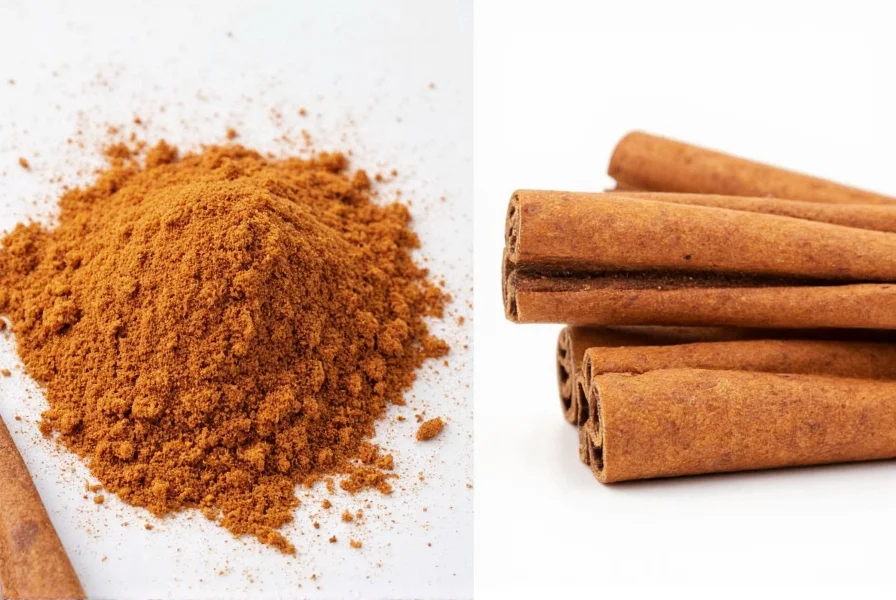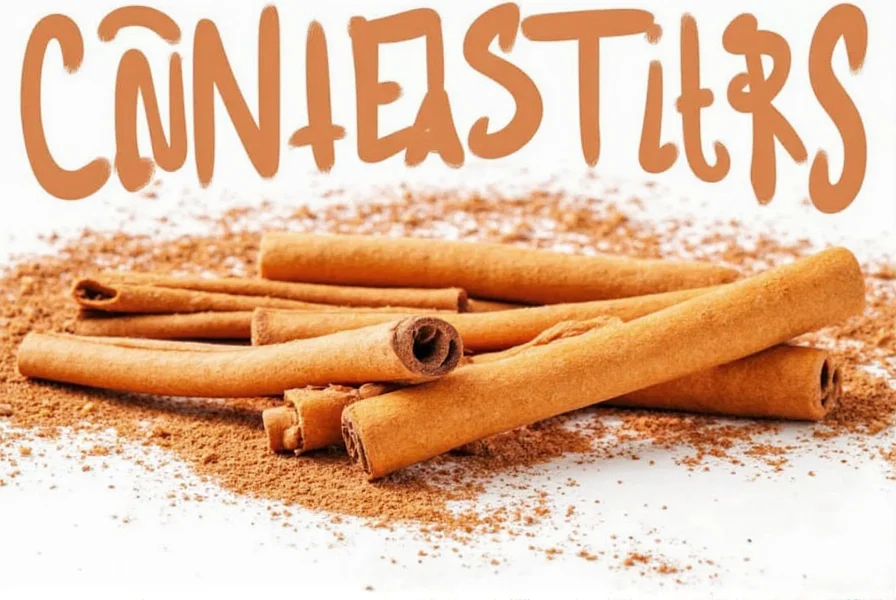Are you curious about the health benefits and culinary uses of cinnamon sticks? Cinnamon sticks, the dried inner bark of cinnamon trees, offer more than just flavor. They have been used for centuries for their potential health benefits and versatile cooking applications. In this guide, we'll explore the science-backed benefits of cinnamon sticks, how to use them in cooking, and how to choose quality cinnamon sticks for your kitchen.
A Brief History of Cinnamon Around the World
The story of cinnamon begins thousands of years ago. Ancient Egyptians used it in embalming, while Roman physicians believed it had healing properties. By the Middle Ages, cinnamon became one of the most sought-after spices in Europe, often valued more than gold! Traded along the Silk Road, cinnamon was so rare and precious that explorers set sail across oceans to find its source.
| Type | Origin | Flavor Profile | Price Range | Common Uses |
|---|---|---|---|---|
| Ceylon Cinnamon | Sri Lanka | Mild, citrusy, delicate | $$ - $$$ | Baking, teas, gourmet dishes |
| Cassia Cinnamon | China, Indonesia | Strong, spicy, bold | $ - $$ | Powdered spice mixes, savory dishes |
True vs. Cassia: Know Your Cinnamon Stick
Most cinnamon sticks sold in grocery stores are actually Cassia, which is cheaper and more widely available. However, true cinnamon lovers prefer Ceylon for its nuanced flavor and lower coumarin content (which can be harmful in large doses).
- Ceylon Cinnamon: Known as "true" cinnamon, it has a delicate flavor and is often curled like a cigar when dried.
- Cassia Cinnamon: Has a rougher texture and tends to be harder, often sold in thick, straight quills.

The Health Benefits Behind the Bark
Beyond flavor, cinnamon sticks offer potential health benefits supported by scientific research. According to the National Institutes of Health (NIH), cinnamon may help regulate blood sugar levels and reduce inflammation. However, it's important to note that cinnamon should not replace medical treatment for any health condition.
- May improve insulin sensitivity (studies show potential benefits for people with type 2 diabetes)
- Rich in antioxidants that combat free radicals and oxidative stress
- Has anti-inflammatory properties that may help reduce chronic inflammation
- Can aid digestion when consumed in warm water or tea
Important: While cinnamon has potential health benefits, it's not a cure-all. Consult with a healthcare professional before using cinnamon for medical purposes, especially if you have health conditions or take medications.
Creative Ways to Use Cinnamon Sticks in Cooking
Forget about sprinkling powder — cinnamon sticks can elevate your cooking in subtle but powerful ways. Here are some clever uses with detailed instructions:
- Beverages: Add a cinnamon stick to hot apple cider, chai tea, or coffee grounds before brewing for a natural infusion. For best results, simmer the stick for 10-15 minutes to fully release its flavors.
- Rice & Grains: Simmer a stick while cooking rice or quinoa to add depth and aroma. For perfect results, add the cinnamon stick at the beginning of cooking and remove before serving.
- Stews & Curries: Especially in Indian and Middle Eastern dishes, a cinnamon stick adds complexity without overpowering other spices. For best results, add at the beginning of cooking to allow flavors to meld.
- Desserts: Stir into poached pears, puddings, or custards for a slow-release flavor. Remove the stick before serving to avoid bitterness.
- Diy Extracts: Make homemade vanilla extract by adding a cinnamon stick to your bottle — extra aromatic magic! Simply place the stick in a bottle of vodka or grain alcohol and let it steep for 4-6 weeks.
Buying Guide: How to Choose the Best Cinnamon Sticks
Not all cinnamon sticks are created equal. Whether you're shopping online or in person, here's how to pick quality ones based on objective criteria:
What to Look For:
- Texture: The stick should be brittle enough to snap easily but not too dry or crumbling. Ceylon cinnamon sticks will have multiple thin layers that peel apart easily, while Cassia sticks will be a single thick piece.
- Color: Ceylon sticks tend to be lighter tan, while Cassia sticks are darker reddish-brown. Authentic Ceylon cinnamon has a pale brown color with a slight yellow tint.
- Aroma: A strong, sweet scent means freshness and potency. Ceylon cinnamon has a more delicate, floral aroma, while Cassia has a stronger, spicier scent.
- Source: Check if it's organic, fair trade, or sustainably harvested. Look for products that specify the country of origin rather than just "spice blend" or "mixed cinnamon".
Proper Storage for Maximum Freshness
To keep your cinnamon sticks potent and flavorful:
- Store in an airtight container away from light and moisture
- Keep in a cool, dark pantry or cupboard
- Avoid grinding until ready to use for best shelf life
- Expect up to 2–3 years of freshness if stored properly
3 Must-Try Recipes with Cinnamon Sticks
Ready to spice things up? Try these easy recipes using whole cinnamon sticks:
1. Warm Cinnamon Apple Tea
- Ingredients: 2 apples (sliced), 4 cups water, 1 cinnamon stick, 1 tablespoon honey (optional)
- Instructions: Combine all ingredients in a saucepan and bring to a boil. Reduce heat and simmer for 15 minutes. Strain and serve warm. For best results, let the cinnamon stick steep for 5 minutes after removing from heat.
2. Cinnamon Rice Pudding
- Ingredients: 1 cup short-grain rice, 4 cups milk, 1 cinnamon stick, 1/4 cup sugar, 1/4 cup raisins
- Instructions: Combine rice, milk, cinnamon stick, and sugar in a saucepan. Bring to a simmer over medium heat, stirring occasionally. Cook for 45-60 minutes until rice is tender and mixture is creamy. Remove cinnamon stick before serving. Stir in raisins during the last 10 minutes of cooking.
3. Spiced Lentil Soup with Cinnamon
- Ingredients: 1 cup red lentils, 1 onion (chopped), 2 garlic cloves (minced), 1 teaspoon cumin, 1 cinnamon stick, 4 cups vegetable broth
- Instructions: Sauté onion and garlic in olive oil until soft. Add lentils, cumin, cinnamon stick, and broth. Simmer for 20-25 minutes until lentils are tender. Remove cinnamon stick before blending for smoothness. Season with salt and pepper to taste.

Final Thoughts: Make Cinnamon Stick a Kitchen Staple
Whether you're sipping spiced tea by the fire or simmering a hearty stew, cinnamon sticks bring a touch of magic to any dish. With their rich history, incredible versatility, and scientifically supported health benefits, there's no reason not to have a few tucked away in your spice drawer. From Ceylon to Cassia, every cinnamon stick tells a story — and now you're equipped to make the most of it.
So go ahead, grab a bundle of cinnamon sticks, and start experimenting in the kitchen. Your next favorite flavor might just come from a single curl of bark!
Frequently Asked Questions (FAQ)
What exactly is a cinnamon stick?
A cinnamon stick is the dried inner bark of the cinnamon tree, rolled into a quill shape. Harvested by cutting young branches, removing the outer bark, and scraping the inner bark (which curls naturally during drying), it's used whole to infuse flavor gradually into dishes and beverages without the grittiness of ground cinnamon.
What's the difference between Ceylon and Cassia cinnamon sticks?
Ceylon cinnamon ("true cinnamon") has a delicate, citrusy flavor with multiple thin, layered quills that resemble a cigar. Cassia is bolder and spicier, with a single thick, hard quill and reddish-brown color. Ceylon contains significantly less coumarin (a compound harmful in large doses) and is ideal for daily use, while Cassia is more common in supermarkets.
How can I use cinnamon sticks beyond beverages?
Simmer sticks in rice or grain dishes for subtle aroma, add to stews and curries for depth, infuse into custards or poached fruits, or place in simmer pots for natural home fragrance. They're also perfect for DIY extracts—add one to your vanilla bottle for enhanced complexity.
Do cinnamon sticks offer unique health benefits compared to powder?
Yes! Whole sticks preserve more volatile oils and antioxidants since they're less exposed to air. They provide the same blood-sugar-regulating and anti-inflammatory benefits as powder but with lower coumarin intake (especially Ceylon), making them safer for regular consumption. Steep in warm water for optimal digestion support.
How long do cinnamon sticks stay fresh, and how should I store them?
Stored properly in an airtight container away from light/heat, they retain peak flavor for 2–3 years. Check freshness by snapping a piece—it should be brittle with a strong, sweet aroma. Never store near stovetops or windows where humidity and temperature fluctuate.
Can I substitute ground cinnamon for a stick in recipes?
Yes, but adjust carefully: 1 cinnamon stick ≈ ½–1 teaspoon ground cinnamon. Ground disperses quickly (use early in cooking), while sticks infuse slowly (add at the beginning). For delicate dishes like custards, sticks prevent bitterness that overused powder can cause.
How many times can I reuse a cinnamon stick?
Most sticks retain flavor for 2–3 uses in strong applications (like mulled wine). After simmering, dry thoroughly and store in your spice jar. Discard when snapping yields no aroma—this typically happens after 3–4 uses for Cassia, or 2–3 for delicate Ceylon sticks.










 浙公网安备
33010002000092号
浙公网安备
33010002000092号 浙B2-20120091-4
浙B2-20120091-4